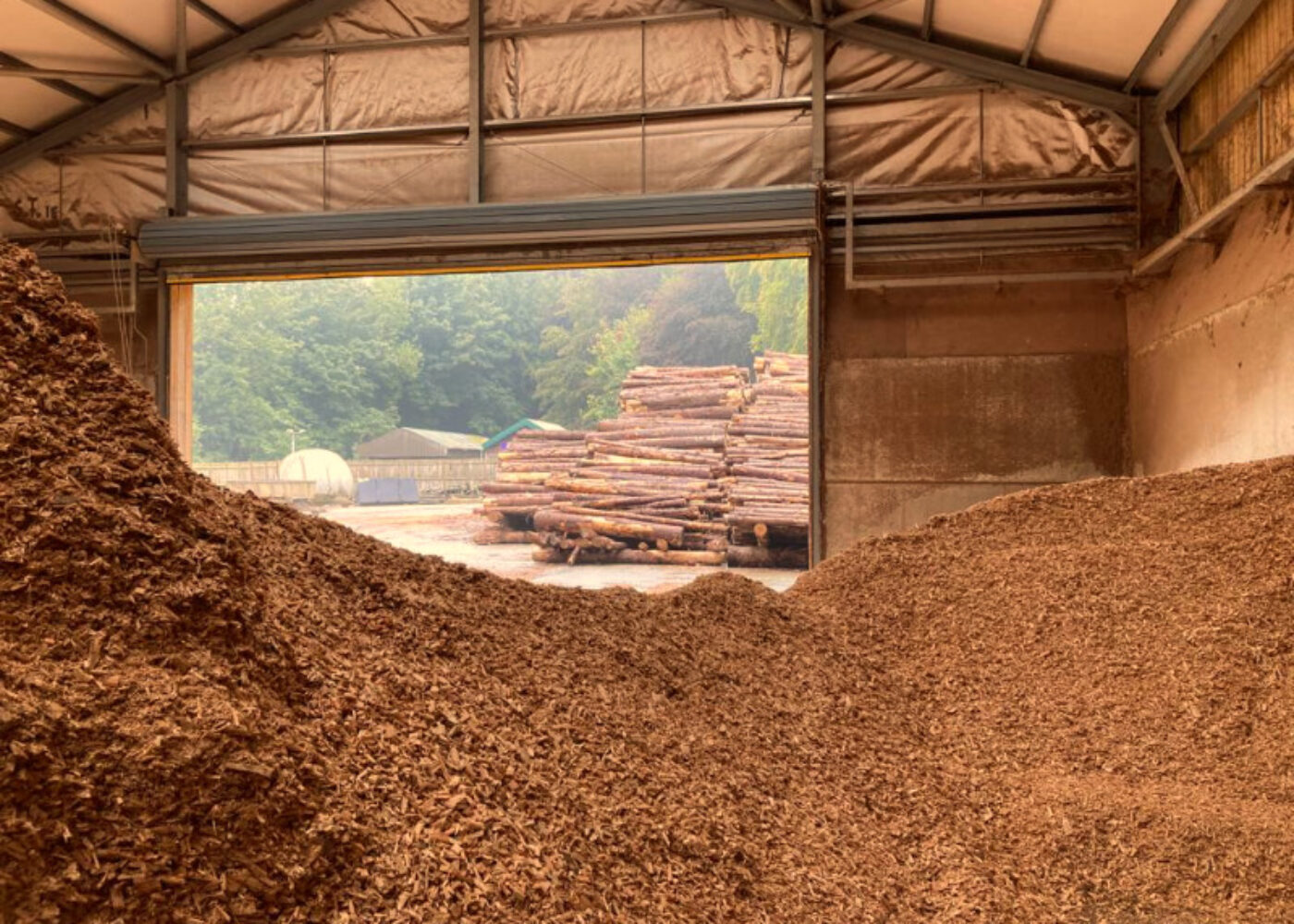About biomass
Creating Heat from Wood
Wood heating is not exactly new, we’ve been using fire from wood for millennia, but burning it efficiently, reliably and cleanly is a lot more complicated than throwing another log on the fire. Modern Biomass Boiler systems have very advanced controls and systems in place to meet the increasingly strict emissions standards around the world, meaning the use of woody biomass as a very low carbon fuel source has a huge role to play in energy policies in modern times.
The Carbon Cycle
As plants grow, they absorb carbon from the atmosphere in the form of CO2 by using energy from the sun. If the plants are eaten by animals then the carbon is converted into animal biomass. If plants are not eaten, then the plant material is broken down, either by rotting or by burning; thus carbon dioxide is released back into the atmosphere. This process is known as the carbon cycle.
Burning biomass fuels causes a Closed Carbon Cycle, as we are taking carbon out of the atmosphere while it is growing, and returning the same amount as it is burned. There are CO2 emissions associated with harvesting, processing and transporting timber fuels, so biomass is classed as a low Carbon fuel.
The key difference between burning fossil fuels and burning biomass is one of time scale. Burning fossil fuels releases carbon that was locked up in biological material millions of years ago, which leads to increased CO2 levels in today’s atmosphere
Why Biomass?
Fuel costs, emissions and CO2 production – these are the 3 main current drivers when considering how our houses and industries use heat. Reducing CO2 in heating our buildings and businesses is difficult, electrification through heat pumps is a massive part of this, but there are many areas where the low grade (temperature) heat from heat pumps isn’t suitable for systems and processes. Biomass allows high temperatures, steam and thermal oil temperatures, as well as suitable temperatures for much of our rural housing stock in the UK.

ENERGY COSTS
Heating with biomass can lead to significant annual cost savings, particularly for users that have high heat usage requirements. The cost of heat generated by logs, wood chips, or wood pellets can be significantly lower than the cost of heat generated by oil, gas, or electricity.
INCREASED CONTROL OVER ENERGY USAGE
The market price for traditional fuels (heating oil and gas) fluctuates, and trends indicate that there is an overall price increase. Comparatively, biomass fuel prices are stable, ensuring that you have increased control over your energy costs.
LOW CARBON
Wood fuel is a ‘low carbon’ fuel that produces a fraction of the emissions of fossil fuels. The critical difference between biomass fuels and fossil fuels is the type of carbon emitted: biomass fuel releases contemporary carbon, whereas fossil fuel releases fossilized carbon.
SUSTAINABLE WOODLANDS
The increasing demand for wood fuel is leading to better woodland management, with associated benefits for wildlife and biodiversity. Indeed, in the past a great deal of wood fuel would have simply rotted, which in turn would have generated, not only carbon dioxide, but also methane: a harmful greenhouse gas that is 21 times more potent than CO2.
LOCALLY SOURCED
Our locally sourced wood fuel enhances the security of the supply in terms of both its availability and its cost. Local sourcing secures clients against ‘fuel shocks’ caused by increasing global demand for fuel and political instability overseas. A localised nature of the supply chain minimises the financial and environmental costs of transporting fuel.
MINIMAL POLLUTANTS
Modern biomass boilers are extremely efficient and sophisticated. They offer levels of efficiency and emission levels comparable to the best fossil fuel boilers. They minimise levels of atmospheric pollutants. Indeed, with good quality dry fuel, they verge on being ‘smokeless’.
Biomass - Explaining the different forms of the fuel
The three most common forms of woody biomass fuels are wood pellets, Woodchips and logs, and these fundamentally are to do with the amount of processing required to produce them. Pellets are very uniform, meaning the boilers fuel feed systems can be simpler, with tankers blowing the fuel into stores or being delivered by bags. Woodchip is exactly that, wood which is chipped into small pieces so again automatic feeders can be used on the boilers. Logs, in the main, are the least processed material, but require a lot more intervention.
Wood chip or wood pellet systems are fully automated and require minimal maintenance, other than annual servicing and periodic de-ashing.
Log boiler systems are not fully automated, so manual handling is required at least once or twice per day, however the benefit is that log boilers can provide a high proportion of a property’s heat usage at a low cost, and from a readily available fuel source. Typically, log boilers will be used to augment existing heating systems (using fossil fuels or other types of energy).
The cost of the fuels follows the amount of processing required, so pellet is the most expensive, followed by chip with log generally being the cheapest form of wood heating.
There are many other forms of Biomass Fuels which are less popular in the UK, Miscanthus, Waste wood, straw, olive pips and sunflower husks are all examples and will give very low running costs in the right circumstances. Contact us with any questions with regards to fuels and we’d be happy to discuss the advantages and pit falls to avoid.

More about Woodchip
More about Wood Pellets
More about Wood Logs
More about Miscanthus and waste woods
Further Resources
There is a wealth of information regarding biomass on the net, this page has a few links to organisations and websites which we think would be useful.






